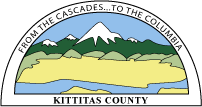About
Kittitas County has a total area of 2,333 square miles. The highest point in the county is Mount Daniel at 7,959 feet above sea level.
Learn MoreQuick Links
Email notificationsEmployment
Interactive Maps
Property Search
Contact us
Press Releases
Departments
Offices and DepartmentsInmate Roster
Assessor
Community Development
Superior Court Clerk
Public Health
Public Works
Services
Building PermitsCourts
Elections
Event Center
Ordinances
Public records request
How do I...

Quick Links
Departments
Services

From the cascades to the columbia
Copyright © 2025 - Kittitas County - All Rights Reserved.
Disclaimer | Privacy notice | Terms of Use
Disclaimer | Privacy notice | Terms of Use